art
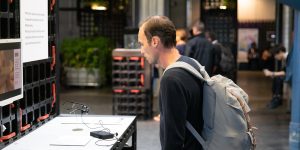
xDiversity Project
Yoichi Ochiai (JP), JST CREST xDiversity Project Colleagues (JP)
This project aims to explore AI-assisted human-machine integration techniques for overcoming impairments and disabilities. The final goal is a social design and deployment of the assistive technologies towards an inclusive society.

Survival Kit for the Anthropocene - Trailer
Maja Smrekar (SI)
Survival Kit for the Anthropocene - Trailer is designed as an apocalypse survival kit. As a hybrid between a beehive and a Slovenian farm chest, it formally connects contemporary art with folklore.
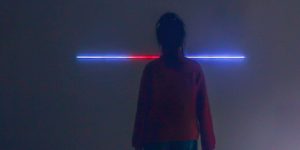
Spectacular Resonance
CCW, University of the Arts London
MA Fine Art Digital is a course that asks questions about what art is in a digital environment. Rather than focusing on specific technology, it allows students from incredibly diverse backgrounds to engage with significant issues through their art. BA Print & Time Based Media is a course that combines the traditional with the contemporary, bringing together print-making, photography, film, audio, writing, video and performance art. This exhibition is co-curated by artists and Program Directors Jonathan Kearney and Lois Rowe from UAL and will showcase work from areas they oversee.

Teletext Hackathon
Nadine Arbeiter (DE), Cordula Ditz (DE), Daniel Egg (AT), Dan Farrimond (UK), Juha van Ingen (FI), Joey Holder (UK), Kathrin Günter (DE), Raquel Meyers (ES), Matthias Moos (CH), Niccolò Moronato (IT), Jarkko Räsänen (FI), Seppo Renvall (FI) and UBERMORGEN (AT/CH/USA)
At the Teletext Hackathon in the POSTCITY, five of the participating artists will create live teletext art, and the public is also cordially invited to get creative on site with teletext software. The resulting artworks can immediately be published and admired in ORF TELETEXT. The teletext exhibition ORF TELETEXT meets art will be shown in a presentation at Deep Space.
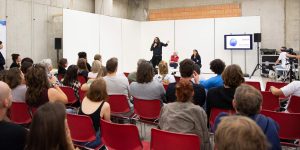
Gallery Spaces Panel VII: Digital art going mainstream?
With the history of digital art commencing in the 1960s to current immersive digital art installations, (meow wolf, artechouse Team Lab or GAN) generating an immense following quickly and quoted as commercially successfully - did digital art become mainstream? Marketplaces for native digital art mushroom in a battle for creators advertising a new way of experiencing, collecting and showing art. The conversation will try to unfold what artistic production of digital art means for the artists themselves, museums and collectors with regard to exhibition making, collecting and archiving.
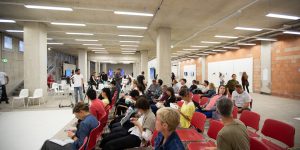
Gallery Spaces Panel VI: Paradoxes and obstacles in maintaining and staging alive biomedia art
This panel with prominent protagonists involved in the field of biomedia art discusses the unprecedented challenges to stage, transport, conserve and collect art that appropriates and subverts the most diverse technologies of the life sciences. The shift from organic representation or simulation to actual biological manipulation results in technical, institutional, regulatory, legal, ethical, bureaucratic, philosophical and aesthetical issues with regards to museum infrastructures, the status of living organisms, tissues and GMOs, and their fragility when maintaining, conserving, re-enacting or shipping them. Such works at the threshold of microperformativity and necropolitics face undesired bacterial deterioration and contamination, and cultural institutions and collectors are still ill-equipped to deal with the subsequent issues.
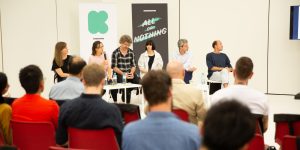
Gallery Spaces Panel V: Artists & scientists – Exploring new forms of collaboration (Scientist in Residence Program)
Just as artists today are increasingly interested in science and technology, scientists and technologists are turning to the arts as a source of new perspectives and tools for communication. This trend requires new initiatives to establish better links between the worlds of art and science, as well as between cultural and research institutions. Through its Art&D labs, Gluon supports artist residencies in laboratories of companies, research institutes and universities. Through its Scientists in Residence programme, it encourages artists to open their studios to scientists and technologists. On the basis of their experiences in these programmes, the scientists of this panel will reflect on the following questions: To what extent can these interdisciplinary collaborations stimulate innovative ideas and projects of social relevance? What challenges do scientists have to face in working together with artists? And how can organizations help them achieve meaningful exchanges?
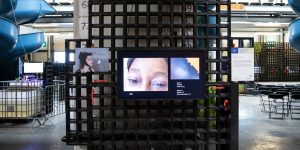
VOIGHT-KAMPFF
Yonlay Cabrera (CU)
The project is based on a procedure for measuring the involuntary ocular changes that happen in a group of people, determined according to categories that correspond with the “Ideological Apparatus of State” (Louis Althusser) used by the Cuban Government. The people are submitted to questions that “stress-test” the normal values in order to determine to what extent they reproduce the ideal behaviors internalized by the ideological apparatus.

Gallery Spaces Panel IV: Interdisciplinary Art – how becoming established?
The art market refers to the process of art distribution and sales. Museums, galleries, collectors, curators, critics are part of the active market participants influencing the dynamics. Artists to choose interdisciplinary approaches are in need of resources, display and active discourse with all industry participants to increase awareness, understanding and appreciation for interdisciplinary work. What is needed of all industry participants to propel interdisciplinary work to a representation established level? Art and science continuously discover common questions and modes of operation, resulting however in fundamental different outcomes. These differences create friction and great space for collaborations between disciplines.
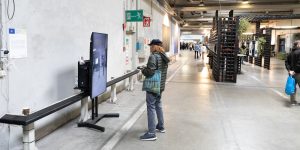
tx-mirror
Martin Reinhart (AT), Virgil Widrich (AT)
The real-time installation tx-mirror is a magical mirror with a camera: visitors can look at themselves and explore the laws of a universe where time and space have been reversed.


